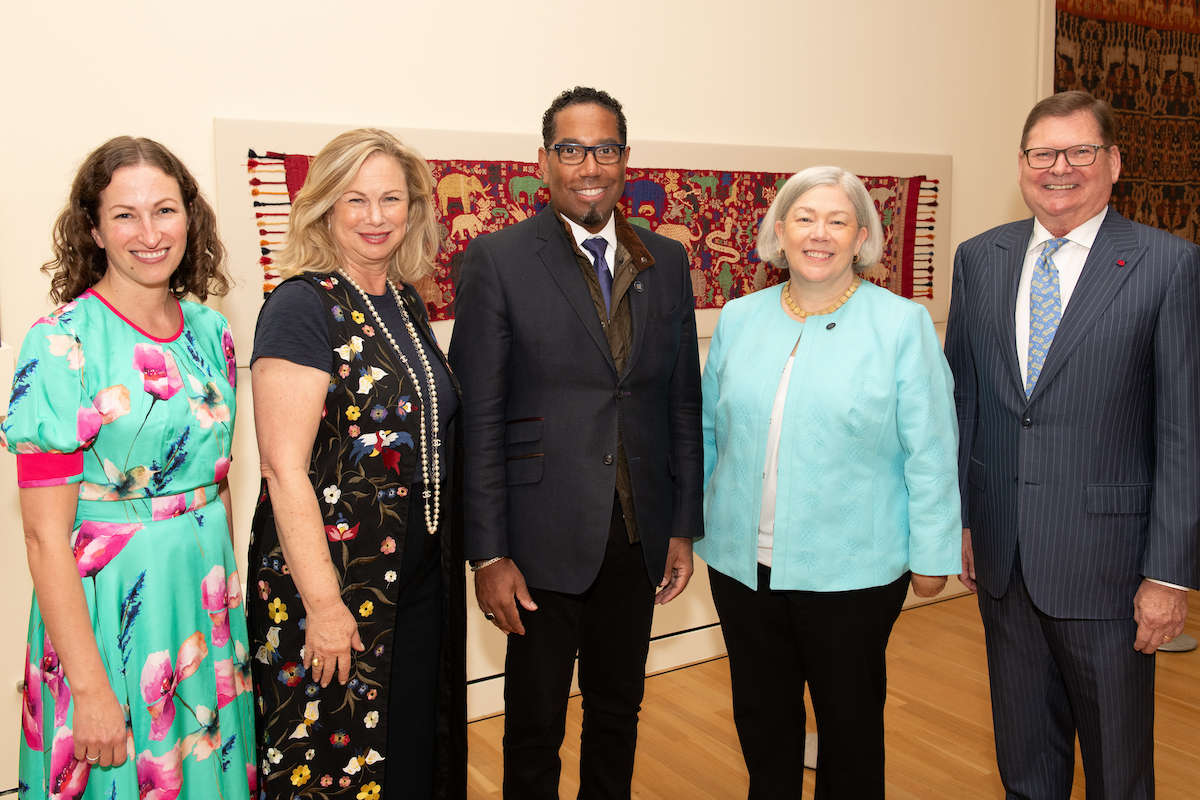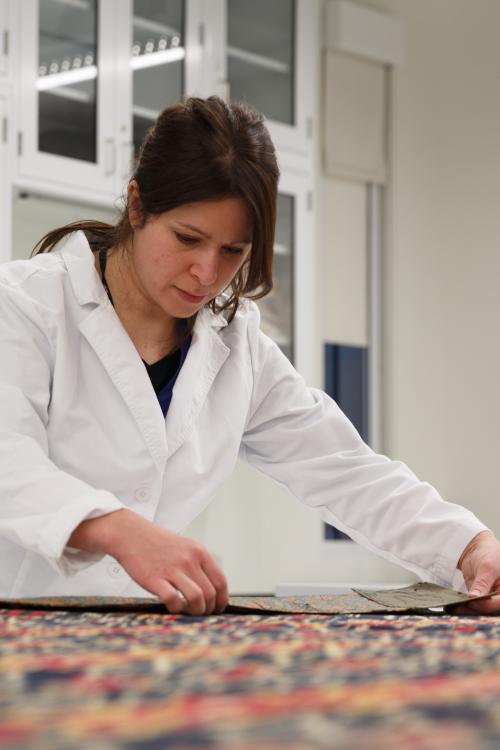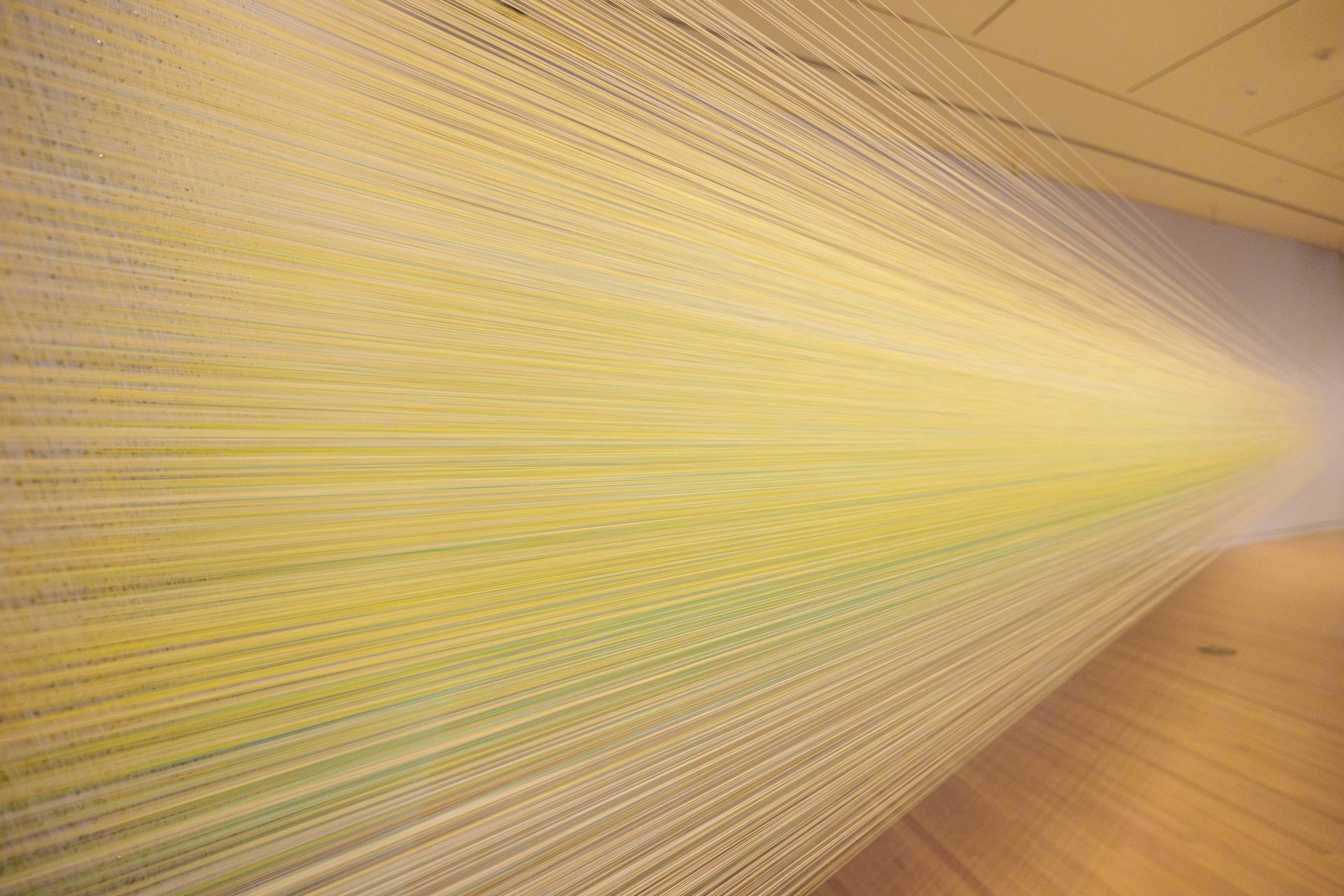GW President Ellen Granberg announced an anonymous $25 million gift to support The Textile Museum, the single largest investment in the museum’s history. Over nearly 100 years, The Textile Museum has gained an international reputation for excellence in research, exhibitions and educational programs that explore textile art as global cultural heritage, with collections spanning five continents and five millennia. The museum’s conservation program has been a pioneer in innovative practices in textile care and providing specialized training for conservators. The Textile Museum reopened in its new home at the George Washington University in 2015, bringing new opportunities to invigorate research and scholarship, transform collections care and prepare the next generation of museum professionals.
“This extremely generous gift will have a transformational impact on The Textile Museum,” Granberg said. “The museum is recognized as a center of excellence for the international prominence of its collections, its academic mission and its global community. These funds will allow us to expand our leading work in textile collections care, scholarship and museum training for generations to come.”
The bulk of the gift, $24 million, will be placed in an endowment to provide long-term support for textile conservation, curatorial scholarship and educational initiatives. As The Textile Museum prepares for its centennial celebration in 2025, the remaining $1 million will fund current needs including new equipment for conservation, enhancements to the Textiles 101 learning center, technology to facilitate virtual programming and preserve the museum’s digital resources, and other centennial priorities.
“This extraordinary gift acknowledges the worldwide relevance of our museum’s collections, invests in our museum professionals and recognizes our responsibility to share, collaborate and facilitate access to global heritage,” said John Wetenhall, director of The George Washington University Museum and The Textile Museum. “It also signals an investment in the future of textiles: training the next generation of scholars and museum professionals and expanding the museum’s audience through digital learning.”
Director John Wetenhall (center) is among the staff at The George Washington University Museum and The Textile Museum who teach and mentor GW students interested in pursuing museum careers. (Photo: Cara Taylor)
In the 2022-23 academic year, the museum employed approximately 40 GW students on a part-time basis, offering hands-on exposure to museum professions. “My work at The Textile Museum has developed new skills that will help me in my future career,” said Emma Stewart, an M.A. student in GW’s Museum Studies program who works in the museum’s curatorial department. “I've had opportunities to complete collection inventories, physically handle textiles, conduct research and get exposure to methods and materials, and learn how to work with a variety of professionals across the museum.”
Donna Arbide, GW’s vice president for development and alumni relations, noted that the gift reflects the donor’s belief in The Textile Museum’s enduring capacity for impact. “Investing in GW with a gift of this size is an incredible testament to our leadership in textile studies and preservation. We are honored by this gift, which demonstrates faith in The Textile Museum to protect and promote cultural heritage that is significant across the globe.”
Twelve million dollars in endowed funds for conservation and curatorial engagement will underwrite students and visiting scholars, advance research and scholarship, and support the museum’s Avenir Foundation Conservation and Collections Resource Center on GW’s Virginia Science and Technology campus. The conservation lab preserves more than 25,000 textiles in the collections and prepares them for display in museum exhibitions. It also serves aspiring conservators through training programs and graduate fellowships.
Another $12 million establishes a new endowment to support onsite museum education and broaden global reach through digital initiatives, ensuring the museum continues to be an integral part of teaching, research and learning at GW. Priorities include appointing a new educator dedicated to engaging faculty and students, as well as creating academic courses and paid student positions. Endowed funds will also support museum staff professional development.
Additionally, the endowment will fund the hardware, software and staffing to activate The Textile Museum Collection online, focusing special support on interpretation by our community of students, faculty and independent researchers. These endeavors will also ensure the preservation and dissemination of digital images of collection artworks and the archives of leading textile scholars.
“This remarkable donor’s generosity ensures The Textile Museum of enduring reach as it addresses the key challenge of cultivating successive generations of those who appreciate textiles as art and cultural heritage,” said Bruce P. Baganz, chairman of The Textile Museum’s board of trustees and co-chair of the George Washington University Museum’s board. “This investment fundamentally advances our aspirations for the museum’s international leadership in art, scholarship, education and fostering cultural understanding.”
Arbide added that she frequently stops by the museum in Foggy Bottom to see the latest exhibitions, noting that the facility is free and open to the public, not just the GW community. “Textiles provide a unique view into cultures that have existed since the dawn of civilization,” she said. “The museum is a truly remarkable gem.”
Gifts to The Textile Museum expand public knowledge and appreciation of the artistic merits and cultural importance of the world’s textiles.






